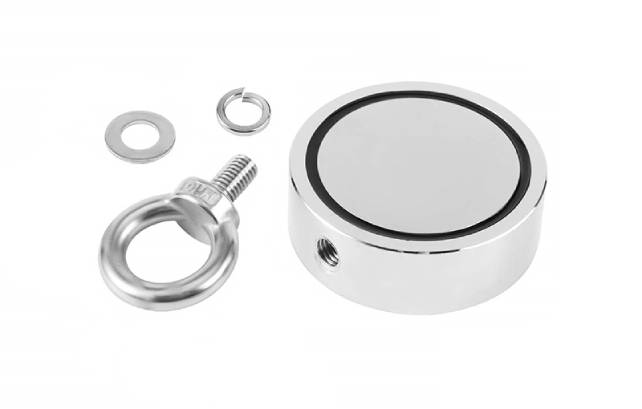NdFeB magnets can be divided into bonded NdFeB and sintered NdFeB. Bonding is actually injection molding, while sintering is vacuumed and heated at high temperature!
Neodymium iron boron magnets are Permanent Magnets with the strongest magnetic force so far. The material grades are N35-N52; various shapes can be processed according to specific requirements: round, square, perforated, magnetic tile, magnetic rod, convex, trapezoidal, etc.; despite these advantages, the surface is easy to rust, so it is usually required Do some protective surface treatments: nickel plating, zinc plating, gold plating, epoxy plating, etc. The applicable ambient temperature of ordinary NdFeB magnets is below 80 degrees, but there are also several types that can withstand high temperatures of 200 degrees. Mainly used in electronics, electrical appliances, packaging, motors, toys, leather goods, automobile machinery, etc.
The main raw materials for the production of NdFeB magnets are Rare Earth Magnets, rare earth metal praseodymium, pure iron, aluminum, boron iron alloys and other rare earth materials.

Neodymium Iron Boron Magnets
The production process of Neodymium Iron Boron Magnets, in layman's terms, is as follows: The materials are mixed and smelted, and then the refined metal blocks are broken into small particles. Put the small particles into the mold and press to form. Then sintered. The sintered product is the blank. The shape is generally square or cylindrical. Take the square as an example, the size is generally concentrated in the length and width of 2 inches, the thickness is about 1-1.5 inches, and the thickness is the magnetizing direction. Then, according to actual needs, cut the blank into the required size and shape. After cutting the magnet, chamfering, cleaning, electroplating, magnetizing, it's all right.
There are basically two types: slicer cutting or wire cutting.
The slicer is a diamond inner hole cutting blade with a thickness of about 0.3mm, which cuts the magnet to the required size as required. But this method is only suitable for simple square and cylindrical shapes. Due to the inner hole cutting, the size of the magnet cannot be too large, otherwise it cannot be placed in the blade. Another method is wire cutting. Generally used to cut tiles and large-size products.
The dimensional accuracy of NdFeB products is relatively economical, about 0.05mm. In fact, the existing processing methods can reach an accuracy of 0.01. However, since neodymium iron boron generally needs to be electroplated, it needs to be cleaned before electroplating. The corrosion resistance of this material is very poor, and the dimensional accuracy will be washed away during the pickling process. Therefore, the accuracy of a truly electroplated product cannot reach the level of simple cutting and grinding.
Orientation: NdFeB magnets are oriented. Simply put, the actual effect is that for a square magnet, only the orientation direction has the highest magnetic field strength, and the other two directions have much smaller magnetic field strength. When you attract several magnets together, the oriented magnets can only be attracted in one direction, not arbitrarily. This orientation work is carried out when the blank is pressed. This reason also limits the size of the magnet blank, especially the height of the magnetizing direction. At present, the relatively reasonable height dimension in the magnetizing direction is generally not greater than 35mm. High performance, generally not more than 30mm. So, what if you need a magnet with a large magnetization direction? Several magnets can be superimposed. This effect is similar to the series connection in an electric field. Of course, this method has little meaning in actual use and is rarely used.

Copyright © Ningbo Horizon Magnetic Technologies Co., Ltd. All Rights Reserved Sitemap